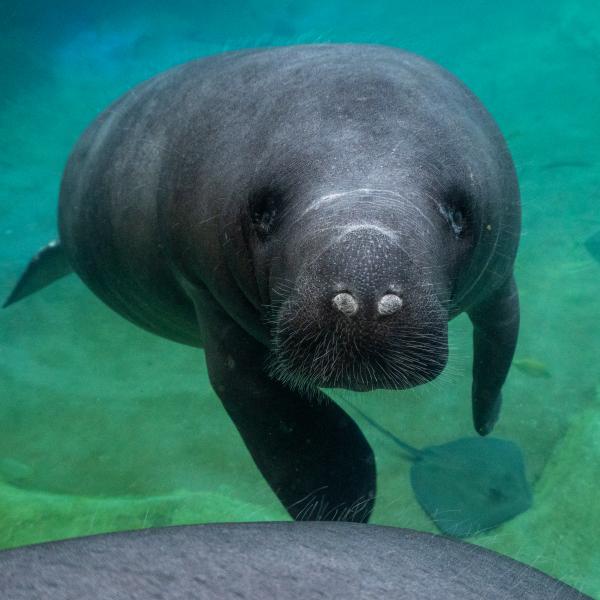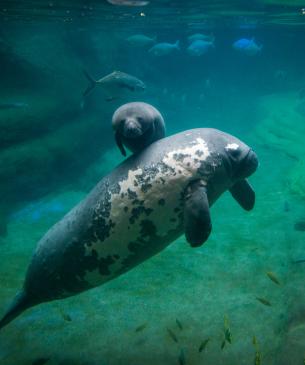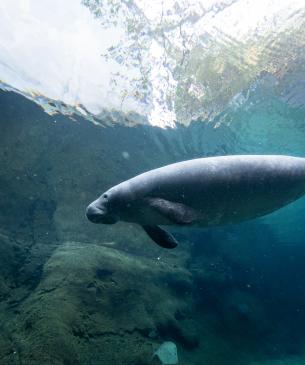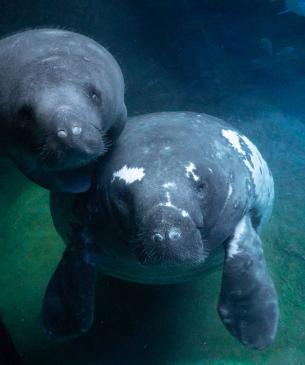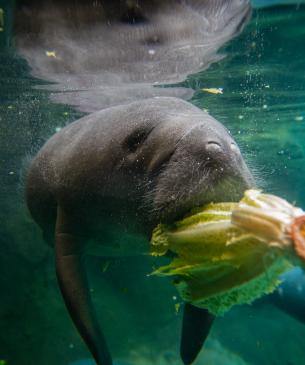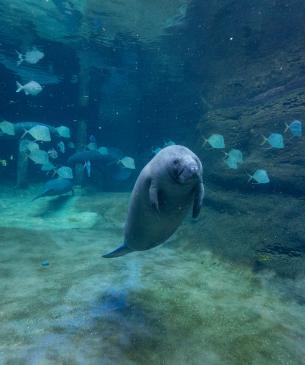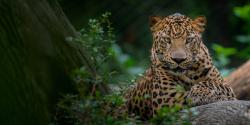Manatee are generally solitary, because they do not rely on others to find food or for defense.
They can form groups in areas with ideal water temperature and abundant food, but do not observe any social hierarchy. Only mothers and young demonstrate long-term relationships.
Scientific Name: Trichecus manatus
Conservation Status: Vulnerable
Size: Average length: 9.8 ft
Weight: Average mass: 881 lb

